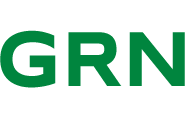Financing costs represent a critical barrier to scaling up clean power projects
Power consumption in Africa is rising quickly, and renewable energy is set to play a major role in meeting the increase in demand. Based on today's policy settings, 80% of new generation capacity in Africa by 2030 is projected to be from renewable sources, particularly solar PV, hydropower and geothermal. Meanwhile, achieving the goals on climate, energy development, and universal energy access laid out by African governments would require even faster uptake of renewable power. IEA analysis indicates that in this scenario, annual energy investment needs to roughly double from USD 110 billion today (Feb 6) to over USD 200 billion by 2030, largely driven by growth in spending on clean power projects and the infrastructure to support them.
As investment needs grow in the power sector - where projects tend to have relatively high upfront costs - financing becomes especially important. However, many African governments face challenges in financing clean energy projects due to public funding constraints such as high debt servicing costs. This, combined with limited financial market maturity and low domestic savings levels, results in a reliance on external funding for clean energy projects from development finance institutions (DFIs) or international private financiers. While DFIs can offer lower or concessional rates, private financiers often have to price in higher project risks, resulting in a high cost of capital. This makes it harder for projects to be considered bankable or provide affordable power to end users.
As countries in Africa look to expand clean power, overcoming these barriers will be critical and require the adoption of effective solutions.
Concessional capital is vital to reduce financing costs for renewable projects
In 2024, the IEA added Kenya and Senegal, both IEA Association countries, to the Cost of Capital Observatory, an IEA-led initiative that tracks the cost of capital in different countries based on surveys of investors and experts. Both Kenya and Senegal have benefitted from clear government targets and a growing share of renewables in their respective energy mixes. In the past decade, Kenya expanded its solar and wind sectors, and it is now home to the continent's largest onshore wind development, the Lake Turkana Wind Project. Over the same period, Senegal secured over USD 1 billion in independent power producer (IPP) projects which financed over 310 megawatts (MW) of wind and solar projects, including the Ten Merina solar PV plant (30 MW) and the Taiba N'diaye wind plant (159 MW).
Despite clear interest from investors, the cost of capital for clean power projects in both countries remains high. For utility-scale solar power projects, our survey data suggests that the weighted average cost of capital (WACC) in Kenya and Senegal is between 8.5% and 9%. In North America or Europe, rates are between 4.7% and 6.4%.
Nonetheless, Kenya and Senegal see lower financing costs than South Africa and other emerging and developing economies covered in the Observatory, where the WACC is between 9.5% and 11%. This is primarily due to the role of concessional capital; about half of the projects analysed in Kenya and Senegal were funded by international financial institutions in the form of low-cost debt.
While concessional capital lowers the overall WACC for clean power projects in these countries, it complicates the comparison across emerging and developing economies as it does not reflect the risks assessed by most investors, or the rates of capital available in the local market. Businesses in the energy sector raising capital domestically often report rates of over 15%, with pay-back periods that are too short for most of their needs. Many larger energy projects therefore only go ahead if concessional capital is available.









